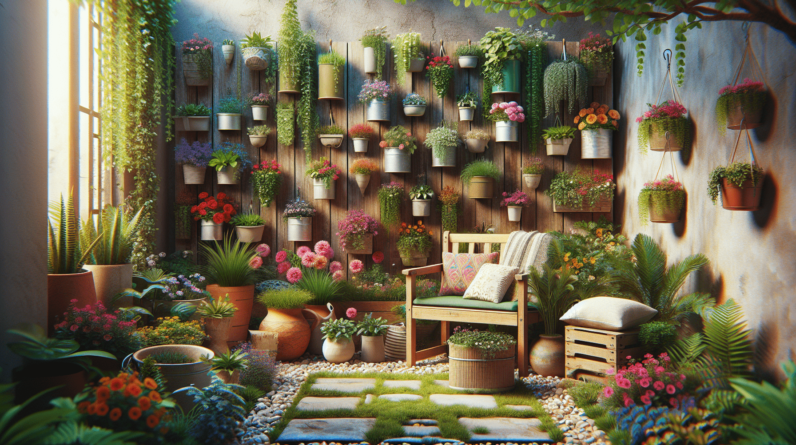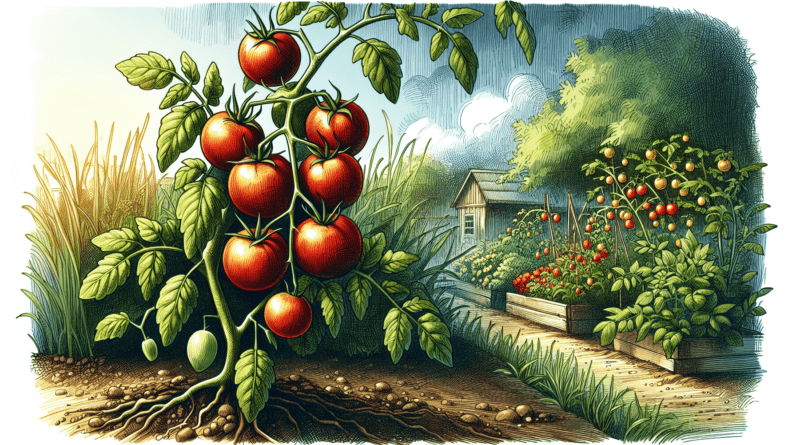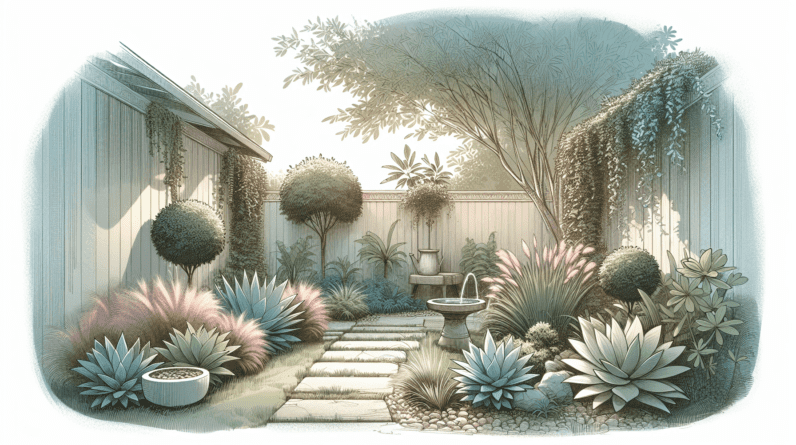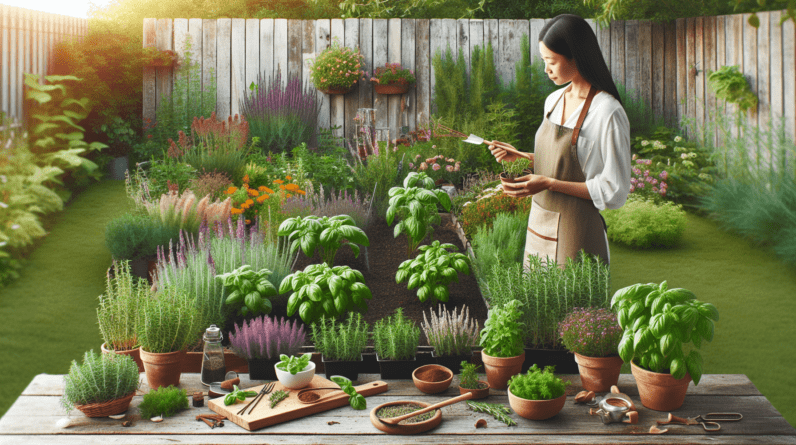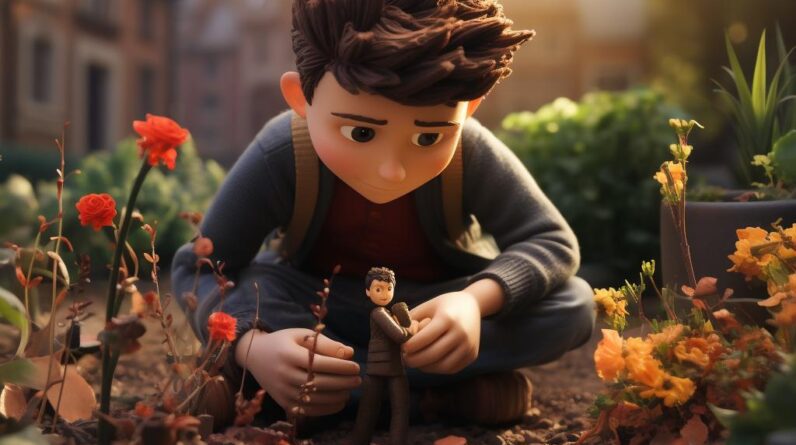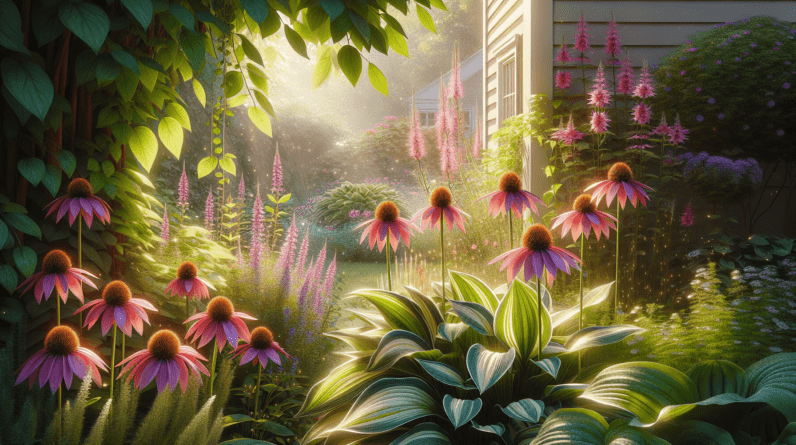
Best Perennials for a Beautiful Backyard Garden” offers a curated guide to the top perennial plants that can transform your outdoor space into a lush, vibrant retreat. As you read, you’ll discover a variety of hardy, long-lasting blooms that are not only easy to care for but also sure to bring beauty and color to your garden year after year. Whether you’re a seasoned gardener or just getting started, you’ll find practical tips and inspiration to help you create a stunning, enduring landscape. Have you ever strolled through your backyard and wondered how you could transform it into a lush, blooming sanctuary? Well, you’re in luck!

Best Perennials For A Beautiful Backyard Garden
Creating a beautiful backyard garden might seem like a daunting task, especially when you think about the sheer number of plants you can choose from. However, the key to a stunning outdoor space lies in selecting the right perennials. Perennials are plants that live for more than two years, so once you plant them, they keep coming back year after year. Pretty great, right?
Why Choose Perennials?
The beauty of perennials is their longevity. Unlike annuals that need replanting every year, perennials return, bringing with them fuller foliage and bigger blooms each time. You invest once and reap the rewards continuously. Not only do perennials save you time and effort, but they also offer consistent beauty to your garden.
Planning Your Perennial Garden
Before you rush to the nursery, it’s crucial to plan your garden. Assess the sunlight, soil type, and wind conditions in your backyard. Most perennials are pretty hardy, but the right conditions can make a world of difference.
Sunlight Requirements
Sunlight plays a huge role in the health of your plants. Some perennials love to bask in full sun, while others might prefer the dappled shade. Knowing how much sunlight different parts of your garden get can guide your plant selection process.
| Sunlight Exposure | Ideal Perennials |
|---|---|
| Full Sun | Coneflowers, Black-Eyed Susans, Daylilies |
| Partial Shade | Hostas, Astilbes, Bleeding Hearts |
| Full Shade | Ferns, Ligularia, Brunnera |
Soil Type and Drainage
Next, let’s talk dirt. Perennials can flourish in various soil types, but well-draining soil is generally the way to go. Some perennials are specific about their soil preferences, so make sure to check what’s already in your garden bed.
| Soil Type | Ideal Perennials |
|---|---|
| Loamy Soil | Peonies, Phlox, Russian Sage |
| Sandy Soil | Lavender, Sedum, Agastache |
| Clay Soil | Daylilies, Helenium, Aster |
Wind Conditions
Don’t overlook the wind conditions in your backyard. Some plants are more susceptible to damage from strong winds, particularly those with weaker stems or large, delicate flowers. Planting more robust perennials, or locating them in wind-sheltered areas, can save you a lot of frustration down the line.
Best Perennials for Different Garden Zones
Garden zones, determined by the USDA, are crucial for selecting plants that will thrive in your area. Knowing your zone helps you choose plants resilient to the temperatures and conditions specific to your location.
| USDA Zone | Ideal Perennials |
|---|---|
| Zone 3-5 | Lupine, Peonies, Siberian Iris |
| Zone 6-8 | Salvia, Rudbeckia, Verbena |
| Zone 9-11 | Agapanthus, Salvia, Blanket Flower |
Top Picks For Your Perennial Garden
Coneflower (Echinacea)
Coneflowers are the stalwarts of any garden. Hardy, drought-resistant, and blooming all summer long, these beauties attract butterflies and bees, making them an ecological as well as an aesthetic choice. You can find them in an array of colors like pink, purple, and even yellow. They prefer full sun and well-draining soil.
Black-Eyed Susan (Rudbeckia)
Charming and cheerful, Black-Eyed Susans light up any garden with their bright yellow blooms and black centers. These flowers are perfect for adding a splash of color and thrive in full sun and a variety of soil types. Plus, they’re pretty low maintenance.
Daylilies (Hemerocallis)
Daylilies are incredibly versatile and can flourish in a variety of soil and light conditions. Each bloom lasts just one day, but the plant produces copious flowers throughout its blooming season. From deep reds to sunny yellows, you’re bound to find a color that matches your garden aesthetic. Daylilies are also resistant to pests and diseases, making them a reliable choice.
Hostas
If you have a shady spot in your garden that needs a bit of sprucing up, hostas are the plant for you. These leafy perennials come in various shades of green, blue, and even variegated patterns. While they do flower, the foliage is their main attraction. Hostas are also easy to divide, so you can propagate them and expand your garden with minimal effort.
Lavender (Lavandula)
Not only does lavender offer beautiful purple spikes of flowers, but it also adds a wonderful fragrance to your garden. It’s fantastic for dry, sunny spots and thrives in sandy soil. Lavender can also be used in cooking, sachets, and other crafts, making it a versatile plant beyond its ornamental value.
Peonies
Peonies are showstoppers in any garden, thanks to their large, fragrant blooms that come in colors ranging from soft pink to vibrant red. They are early bloomers, often heralding the start of the growing season. They prefer loamy soil and full to partial sun. Once established, peonies require minimal maintenance and can live for decades.
Salvia
Salvias are beloved for their towering spikes of blue, violet, or red flowers that draw hummingbirds and bees. They are drought-tolerant and deer-resistant, making them perfect for lower maintenance gardens. They prefer full sun and well-draining soil.
Astilbes
Astilbes are excellent for shaded gardens and offer feathery, plume-like flowers that come in shades of pink, white, red, and lavender. They thrive in moist, well-draining soil and partial to full shade, making them perfect companions for hostas.
Sedum (Stonecrop)
Sedums, also known as stonecrops, are virtually indestructible. These hardy plants are perfect for sandy soils and sunny spots. They offer beautiful blooms in late summer to fall, adding texture and color when other plants start to wind down. Sedums come in various forms, from ground covers to upright varieties.
Bleeding Heart (Dicentra)
If you’re looking to add a touch of romance to your garden, Bleeding Hearts are a captivating choice. Their delicate, heart-shaped flowers in shades of pink and white add a whimsical touch. They thrive in shady, moist conditions and make an excellent addition to woodland gardens.
Ferns
Ferns are ideal for adding texture and greenery to shaded areas. They thrive in damp, shady spots and come in a variety of shapes and sizes, from the delicate Maidenhair Fern to the robust Ostrich Fern. Though they don’t flower, their unique foliage compensates for it.
Brunnera
Brunnera, often referred to as false forget-me-nots, bring small blue flowers that resemble their namesake, along with large, heart-shaped leaves. They are perfect for shady spots and bloom in early spring. They work well as ground covers and provide a lush, green backdrop for other perennials.
Russian Sage (Perovskia atriplicifolia)
Russian sage is a tough-as-nails plant that thrives in full sun and well-draining soil. Known for its silvery foliage and lavender-blue flowers, it creates a beautiful, airy effect in your garden. The fragrant leaves are an added bonus.
Phlox
Phlox offers a multitude of colors and varieties, ranging from low-growing, creeping forms to tall, upright ones. They are excellent for filling in gaps and attracting pollinators. They prefer full sun and rich, well-draining soil.
Agastache (Hyssop)
Agastache, also known as hyssop, brings tall spikes of tubular flowers that attract hummingbirds and bees. They are drought-tolerant and thrive in full sun and well-draining soil. The aromatic foliage is also a delightful addition.
Garden Maintenance
Even though perennials are low-maintenance compared to annuals, that doesn’t mean they’re maintenance-free. Regular watering, mulching, and occasional fertilizing will help keep your garden looking its best.
Watering
Different perennials have different watering needs. Newly planted perennials will generally need more water until they become established, while many established perennials are relatively drought-tolerant. However, they still benefit from occasional deep watering, especially during dry spells.
Mulching
Mulching helps to retain soil moisture, suppress weeds, and add organic matter to the soil as it decomposes. It’s usually best to mulch in the spring before the hot weather arrives. Lay down a 2-3 inch layer of organic mulch, but keep it a few inches away from the base of your plants to prevent rot.
| Mulching Benefits | Examples |
|---|---|
| Retain Soil Moisture | Prevents evaporation |
| Suppress Weeds | Reduces competition for nutrients |
| Add Organic Matter | Improves soil structure |
Fertilizing
Most perennials don’t need a lot of fertilizer, but they will benefit from a balanced, slow-release fertilizer in the early spring. Over-fertilizing can lead to more foliage at the expense of flowers, so it’s best to follow the manufacturer’s guidelines.
Dividing Perennials
Dividing perennials not only helps to control their size but also promotes better blooming. Different plants have different dividing schedules, but as a rule of thumb, if your plants seem crowded or are blooming less, it’s probably time to divide them.
How to Divide
- Water thoroughly the day before you plan to divide.
- Carefully dig around the plant and lift it from the soil.
- Use a sharp knife or spade to divide the root mass into several sections, each with at least one growing point.
- Replant immediately, water well, and mulch.
Managing Pests and Diseases
Unfortunately, even the hardiest perennials aren’t immune to pests and diseases. Regularly inspect your plants for signs of trouble. Common issues include aphids, slugs, and mildew.
Natural Remedies
- Aphids: Spray with a mixture of water and a few drops of dish soap.
- Slugs: Lay down copper tape around the base of plants or set out shallow dishes of beer to trap them.
- Mildew: Spray with a mixture of water and baking soda, and ensure good air circulation by spacing plants properly.
Design Tips for a Stunning Perennial Garden
Layering
Layering is crucial for a visually pleasing garden. Taller plants should go to the back or the center (if it’s an island bed), medium-height plants in the middle, and low-growing plants at the front. This arrangement ensures that every plant gets its moment to shine.
| Plant Height | Ideal Perennials |
|---|---|
| Tall | Delphiniums, Hollyhocks, Joe Pye Weed |
| Medium | Daylilies, Coreopsis, Bee Balm |
| Low-Growing | Creeping Thyme, Phlox subulata, Lamb’s Ear |
Color Coordination
While a riot of colors can be beautiful, sometimes a more coordinated color scheme offers maximum visual impact. Think about complementary colors (opposite colors on the color wheel) for striking contrasts, or analogous colors (next to each other on the color wheel) for a more harmonious feel.
Seasonal Interest
Make sure your garden offers something to look at all year round. Choose early spring bloomers, summer peaks, and some fall show-stoppers. Don’t forget winter interest, like evergreen foliage or plants with interesting seed heads.
Conclusion
Creating a beautiful backyard garden with perennials is a gratifying endeavor that pays off year after year. By taking the time to choose the right plants, considering factors like sunlight, soil, and garden zone, and properly maintaining your garden, you’ll create a stunning outdoor space that offers beauty and tranquility. Happy gardening!


